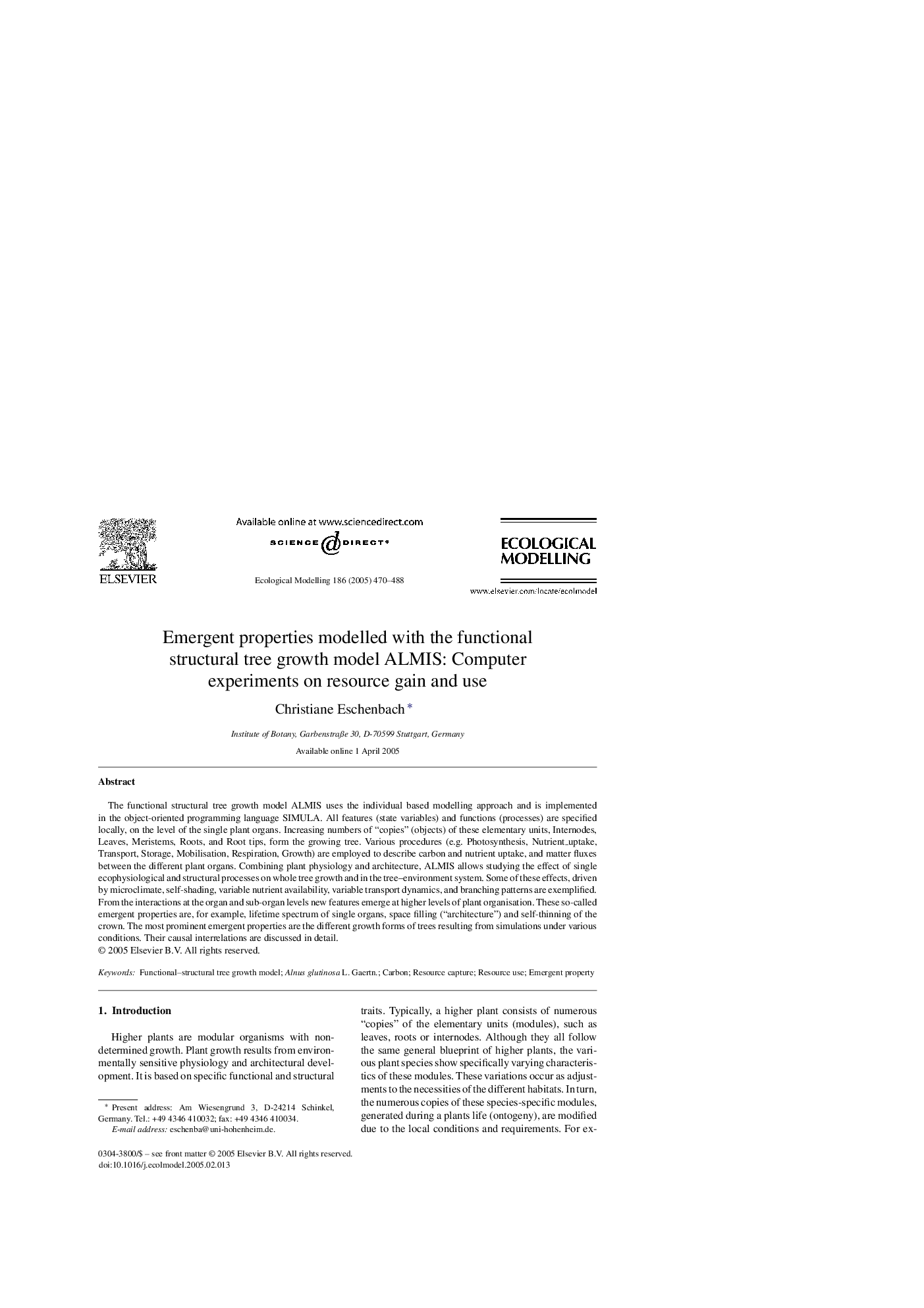| کد مقاله | کد نشریه | سال انتشار | مقاله انگلیسی | نسخه تمام متن |
|---|---|---|---|---|
| 9443434 | 1303528 | 2005 | 19 صفحه PDF | دانلود رایگان |
عنوان انگلیسی مقاله ISI
Emergent properties modelled with the functional structural tree growth model ALMIS: Computer experiments on resource gain and use
دانلود مقاله + سفارش ترجمه
دانلود مقاله ISI انگلیسی
رایگان برای ایرانیان
کلمات کلیدی
موضوعات مرتبط
علوم زیستی و بیوفناوری
علوم کشاورزی و بیولوژیک
بوم شناسی، تکامل، رفتار و سامانه شناسی
پیش نمایش صفحه اول مقاله

چکیده انگلیسی
The functional structural tree growth model ALMIS uses the individual based modelling approach and is implemented in the object-oriented programming language SIMULA. All features (state variables) and functions (processes) are specified locally, on the level of the single plant organs. Increasing numbers of “copies” (objects) of these elementary units, Internodes, Leaves, Meristems, Roots, and Root tips, form the growing tree. Various procedures (e.g. Photosynthesis, Nutrient_uptake, Transport, Storage, Mobilisation, Respiration, Growth) are employed to describe carbon and nutrient uptake, and matter fluxes between the different plant organs. Combining plant physiology and architecture, ALMIS allows studying the effect of single ecophysiological and structural processes on whole tree growth and in the tree-environment system. Some of these effects, driven by microclimate, self-shading, variable nutrient availability, variable transport dynamics, and branching patterns are exemplified. From the interactions at the organ and sub-organ levels new features emerge at higher levels of plant organisation. These so-called emergent properties are, for example, lifetime spectrum of single organs, space filling (“architecture”) and self-thinning of the crown. The most prominent emergent properties are the different growth forms of trees resulting from simulations under various conditions. Their causal interrelations are discussed in detail.
ناشر
Database: Elsevier - ScienceDirect (ساینس دایرکت)
Journal: Ecological Modelling - Volume 186, Issue 4, 10 September 2005, Pages 470-488
Journal: Ecological Modelling - Volume 186, Issue 4, 10 September 2005, Pages 470-488
نویسندگان
Christiane Eschenbach,